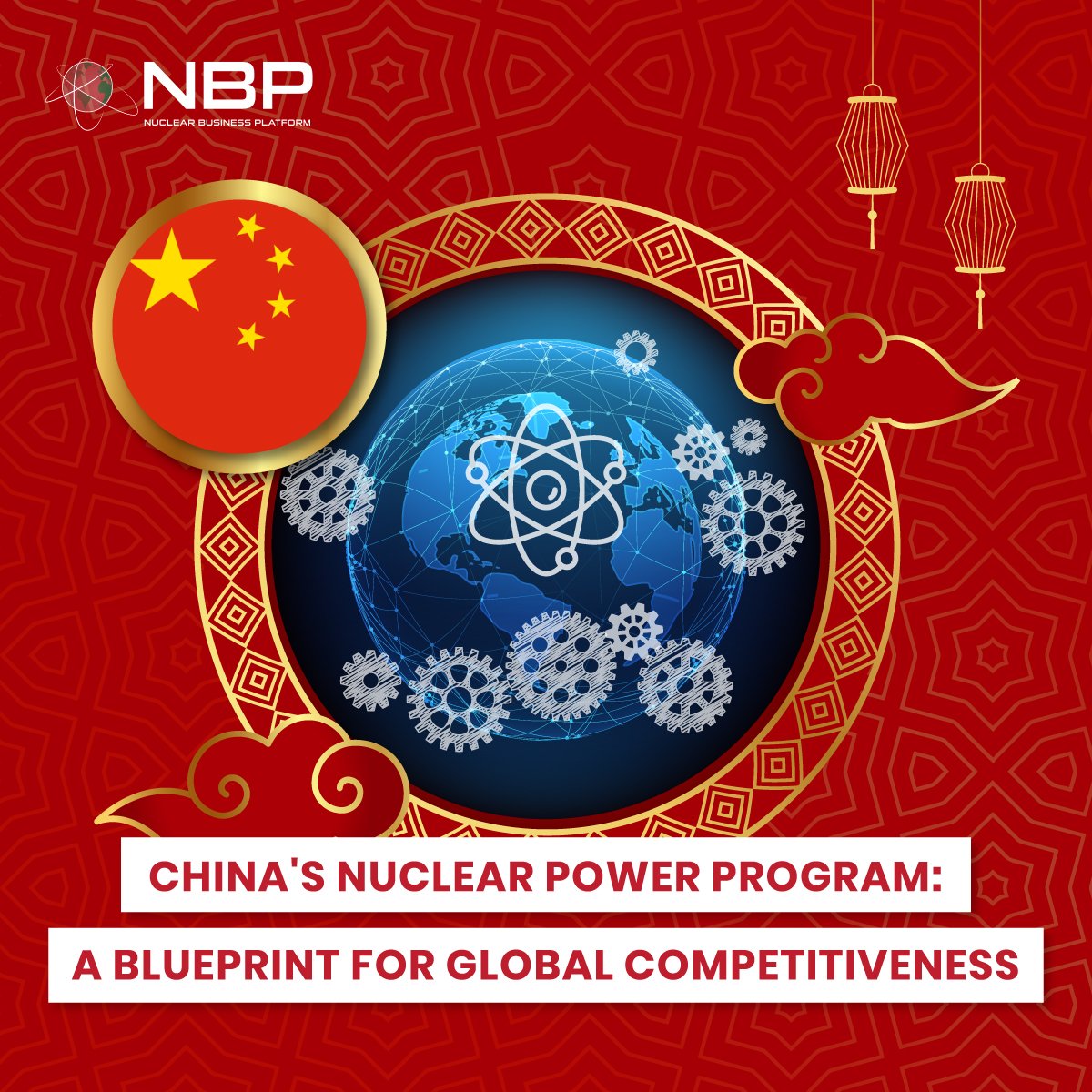China's Nuclear Power Program: A Blueprint for Global Competitiveness
China has become a global leader in nuclear energy, driven by advanced technology, strong government support, and strategic international partnerships. With 57 operational reactors generating 55,762 MWe and an additional 30 reactors under construction set to produce 31,953 MWe, the country has positioned nuclear energy as a key element of its national strategy. By prioritizing both conventional and advanced reactor technologies, China has not only bolstered its domestic energy security but also unlocked significant export potential.
China's Rapid Nuclear Expansion and Long-Term Energy Goals
According to the latest report by the Information Technology & Innovation Foundation (ITIF), China is rapidly expanding its nuclear energy capacity, with 30 reactors under construction and plans to add 6 to 8 new reactors annually, boosting capacity by 5,000–8,000 MW each year. Notably, nearly all Chinese nuclear projects since 2010 have been completed in seven years or less. Since 2022, five reactors have been brought online, with construction times ranging from just under five to just over seven years.
The government's commitment was reinforced by the 14th Five-Year Plan (2021–2025), which aims to build 150 new reactors over the next 15 years, reaching 200 GW of nuclear power by 2035—enough to power over a dozen cities the size of Beijing. Analysts estimate this will require an investment of $370–440 billion. By 2050, China targets nuclear energy to account for at least 15% of its electricity generation, making it the third-largest energy source after wind and solar. In the past decade, China has nearly tripled its nuclear capacity, achieving in 10 years what took the U.S. nearly 40 years.
Government Support and Vision for the Nuclear Industry:-
The Chinese government has played a crucial role in shaping the economics of the country’s nuclear sector through affordable financing and subsidies, including feed-in tariffs that reduce the cost of nuclear power. As a result, the cost of nuclear power in China is about $70 per megawatt-hour, significantly lower than in the United States ($105) and the European Union ($160).
State-backed loans cover around 70 percent of the cost of Chinese reactors, with interest rates as low as 1.4 percent—far more favorable than financing terms available to nuclear companies in other countries. These financial advantages enable China to build nuclear plants at a cost of approximately $2,500 to $3,000 per kilowatt, about one-third the cost of similar projects in the U.S. and France.
Looking ahead, the Chinese government sees nuclear energy as a key export sector, particularly under the Belt and Road Initiative (BRI). Officials aim to sell 30 nuclear reactors to BRI partner countries by 2030, generating up to 1 trillion yuan ($145.5 billion) in revenue for Chinese companies by the decade's end.
Climate Policies and Strategic Considerations Driving Nuclear Ambitions:-
China’s climate policies have been key in advancing its nuclear energy sector. Nuclear power is critical to achieving President Xi Jinping’s goal of carbon neutrality by mid-century. In addition to environmental objectives, economic and national security concerns, such as reducing dependence on oil imports, are major drivers of China’s nuclear strategy.
By 2025, China aims to generate 200 GW of nuclear power, potentially avoiding 1.5 billion tons of carbon emissions annually—more than the combined emissions of the UK, Spain, France, and Germany. Looking ahead, China plans to replace its 2,990 coal-fired power plants with clean energy sources by 2060, further emphasizing its commitment to sustainable energy transformation.
Other Leading Factors of the Cause:-
A study by the International Atomic Energy Agency (IAEA) highlights a significant increase in private R&D investments in China’s nuclear industry, particularly from globally listed companies. Private R&D spending reached $1.3 billion in 2020, up from $436 million in 2015.
In the "2023 EU Industrial R&D Investment Scoreboard," China secured seven spots among the top 22 global nuclear power companies. CGN Power led the way, with an R&D intensity of around 4.5% of its revenue, outpacing Orano, a major European nuclear company.
China also ranks third globally in nuclear science and engineering research citations, according to data from 2022. Research by the Australian Strategic Policy Institute (ASPI) confirms China’s leadership in nuclear energy scientific publications.
In patent innovation, China has seen remarkable growth under the Patent Cooperation Treaty (PCT). Between 2008 and 2023, Chinese entities increased their PCT nuclear patent awards from 5 to 83, surpassing both France and South Korea by 2023.
Advancement in Nuclear Technology and Innovation:-
China’s nuclear power journey began with the approval of its first nuclear power station in 1981, but significant growth only occurred in 2005 when the country accelerated its nuclear construction program. A key moment in this expansion was the 2008 agreement that allowed Westinghouse to license its AP1000 reactor technology to the State Nuclear Power Technology Corporation (SNPTC), which eventually led to the development of China's CAP1400 reactor. Further agreements in 2014 and 2018 between SNPTC and Westinghouse deepened their collaboration on these technologies.
China’s nuclear technology development has also been bolstered by partnerships with France, Canada, and Russia. In 2020, China National Nuclear Power (CNNP) and China General Nuclear Power Corporation (CGN) successfully brought the Hualong One reactor online, marking the launch of China's first domestically developed third-generation reactor.
China has further advanced its nuclear capabilities with the Linglong One, the world’s first multipurpose small modular reactor (SMR). Developed by the China National Nuclear Corporation (CNNC), this reactor is based on the ACP100 design and received approval from the IAEA. Scheduled to be operational by the end of 2025, the Linglong One will generate 1 billion kilowatt-hours of electricity annually, enough to power over 525,000 homes.
Additionally, China is advancing fast neutron reactor (FNR) technology, a key element of fourth-generation reactor innovation, underscoring its leadership in global nuclear energy development.
Hence, China's rapid expansion of its nuclear energy sector offers valuable lessons for countries looking to enhance their own nuclear industries. The country's approach, which blends technological innovation, environmental responsibility, and strategic economic planning, has established China as a global leader in nuclear energy. With robust government support, significant research advancements, and a clear alignment of nuclear development with national security and sustainability goals, China has demonstrated how nations can strengthen both domestic energy security and global competitiveness. By adopting similar strategies, countries can position themselves to thrive in the global nuclear market while achieving their energy and environmental objectives.





